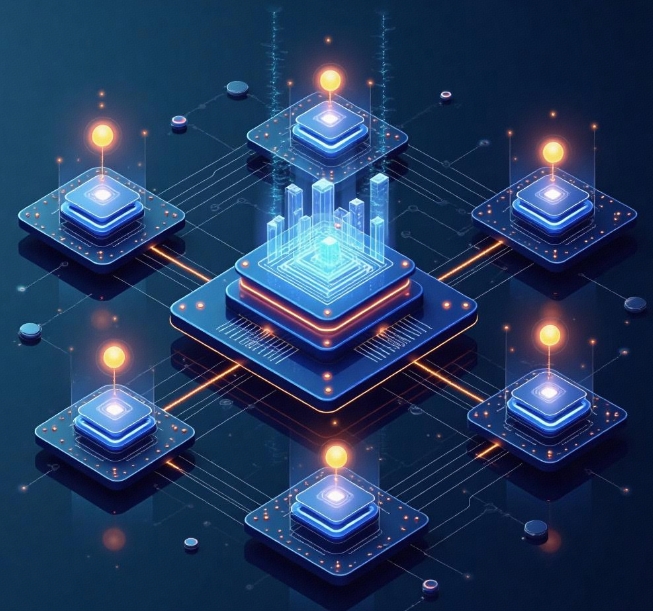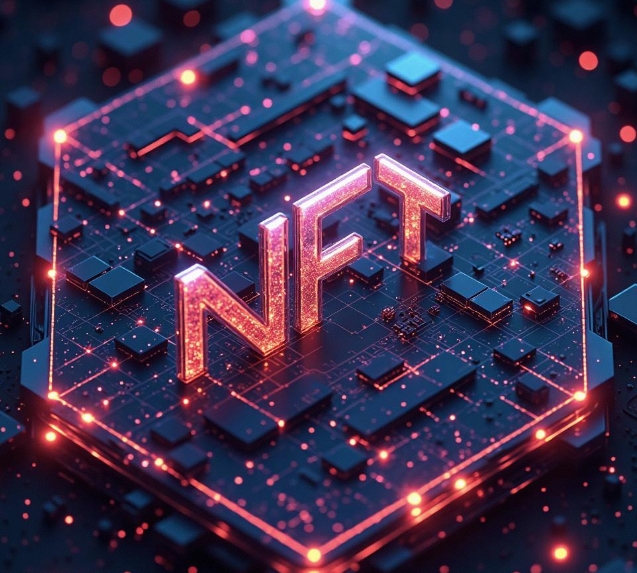DApp and NFT: How to Develop a Decentralized Digital Art Platform
- latest articles
- 1.DApp Development & Customization: Merging Diverse Market Needs with User Experience 2.Analysis of the Core Technical System in DApp Project Development 3.How to achieve cross-chain interoperability in Web3 projects? 4.How does the tokenization of points reconstruct the e-commerce ecosystem? 5.How to Set and Track Data Metrics for a Points Mall? 6.What is DApp Development? Core Concepts and Technical Analysis 7.Inventory of commonly used Web3 development tools and usage tips 8.Development of a Distribution System Integrated with Social E-commerce 9.Six Key Steps for Businesses to Build a Points Mall System 10.What is DApp Development? A Comprehensive Guide from Concept to Implementation
- Popular Articles
- 1.Future Trends and Technology Predictions for APP Development in 2025 2.Analysis of the DeFi Ecosystem: How Developers Can Participate in Decentralized Finance Innovation 3.From Zero to One: How PI Mall Revolutionizes the Traditional E-commerce Model 4.DAPP Development | Best Practices for Professional Customization and Rapid Launch 5.Recommended by the Web3 developer community: the most noteworthy forums and resources 6.From Cloud Computing to Computing Power Leasing: Building a Flexible and Scalable Computing Resource Platform 7.How to Develop a Successful Douyin Mini Program: Technical Architecture and Best Practices 8.Shared Bike System APP: The Convenient Choice in the Era of Smart Travel 9.How to Create a Successful Dating App: From Needs Analysis to User Experience Design 10.From Design to Development: The Complete Process of Bringing an APP Idea to Life
With the continuous development of blockchain technology, decentralized applications (DApps) and non-fungible tokens (NFTs) have become influential technological trends in the digital world. DApps, characterized by decentralization, transparency, and security, have changed people's perception of traditional applications, while NFTs have introduced a new value system for digital art, granting digital works unique non-fungibility. In this context, how to develop a decentralized digital art platform has become a topic of common interest for many artists, developers, and investors.
1. What is a DApp?
A decentralized application (DApp) is an application that runs on a decentralized network, typically built on blockchain technology. Unlike traditional centralized applications, DApps do not rely on a central server. Instead, they use blockchain technology to store data across multiple nodes, ensuring immutability, transparency, and high security.
Key Features of DApps
Decentralization: Data is not controlled by a single entity, ensuring platform openness and transparency.
Smart Contracts: DApps use smart contracts to automate the execution of agreement terms, reducing human intervention.
Incentive Mechanisms: DApps often use tokens as incentives to encourage user participation, contribution, and network maintenance.
2. What is an NFT?
A non-fungible token (NFT) is a blockchain-based digital asset that is unique and non-interchangeable. Unlike fungible tokens such as Bitcoin, each NFT has distinct attributes and can represent various forms of content, including digital art, music, videos, and virtual items.
Key Features of NFTs
Uniqueness: Each NFT is one-of-a-kind and cannot be exchanged for another token.
Indivisibility: NFTs cannot be divided into smaller units like Bitcoin; they exist as complete entities.
Provable Ownership: Leveraging blockchain technology, NFTs provide transparent ownership records and transaction history.
3. The Concept of a Decentralized Digital Art Platform
A decentralized digital art platform, built on DApp and NFT technologies, provides artists and collectors with an intermediary-free, decentralized marketplace. On this platform, artists can upload their works and mint them as NFTs, while collectors can purchase and trade these NFTs to own digital art pieces.
3.1 The Integration of Digital Art and NFTs
NFTs offer a new way to assign value to digital artworks, allowing each piece to possess unique worth, much like physical art. Through NFTs, digital artists can sell their works directly via smart contracts, bypassing intermediaries in the traditional art market.
3.2 Advantages of a Decentralized Platform
A decentralized platform not only enhances transaction transparency but also protects artists' copyrights. Once an artist uploads a work, NFTs ensure its authenticity and copyright ownership, preventing piracy and forgery. The decentralized trading system ensures all transaction records are publicly transparent, allowing artists to earn higher profits from their sales.
4. How to Develop a Decentralized Digital Art Platform
Developing a decentralized digital art platform requires integrating DApp and NFT technologies. Below are some key steps and technical considerations for building such a platform.
4.1 Choosing a Blockchain Platform
First, selecting a suitable blockchain platform is fundamental for developing DApps and NFTs. Currently, Ethereum is the most popular choice due to its robust smart contract capabilities and mature NFT ecosystem. However, other platforms like Solana and Polygon, which offer low transaction fees and fast processing speeds, are also viable options.
4.2 Developing Smart Contracts
Smart contracts are the core of DApps and NFT platforms. For NFTs, smart contracts define functions such as creation, transfer, and destruction. The most common NFT standards are ERC-721 and ERC-1155, which provide foundational guidelines for NFT creation.
For the platform, smart contracts must support NFT minting and trading, as well as handle user authentication, artwork display, and payment processing.
4.3 User Interface and Experience Design
Although blockchain technology is complex, the user interface should be simple and intuitive. The platform should offer an easy-to-use interface for artists to upload works, set prices, and mint NFTs, while providing collectors with a clear browsing and purchasing experience.
4.4 Wallet Integration
To facilitate transactions, the platform must integrate digital wallets, such as MetaMask. Wallet integration not only allows users to store NFTs but also enables seamless transactions within the platform.
4.5 Community and Social Features
Digital art platforms often include robust community and social features to foster interaction between artists and collectors. Functions like comments, likes, and follows can enhance user engagement and retention.
4.6 Security and Privacy Protection
While blockchain technology is inherently secure, additional security measures are necessary at the platform level to prevent hacking and smart contract vulnerabilities. Privacy protection is also crucial, ensuring the security and confidentiality of user data.
5. The Future of Decentralized Digital Art Platforms
As NFTs continue to evolve, decentralized digital art platforms will see more innovations. In the future, artists and collectors may expand beyond digital paintings to include virtual reality art, music, and even in-game items. Additionally, with the growth of Web3.0 and decentralized finance (DeFi), digital art platforms may incorporate more financial elements, such as NFT-backed loans and digital art funds.
Conclusion
Decentralized digital art platforms not only provide artists with a fairer and more transparent environment for creation and trading but also allow collectors to enjoy greater freedom in a decentralized marketplace. Through the integration of blockchain and NFT technologies, we can anticipate a more innovative and diverse art world.
-

DApp Development & Customization: Merging Diverse Market Needs with User Experience
As blockchain technology matures and becomes more widespread, decentralized appl···
-

Analysis of the Core Technical System in DApp Project Development
With the rapid development of blockchain technology, decentralized applications ···
-

What is DApp Development? Core Concepts and Technical Analysis
With the rapid development of blockchain technology, decentralized applications ···

 Blockchain
Blockchain












